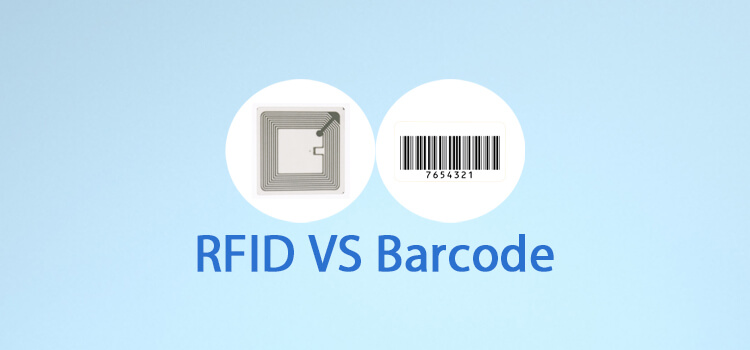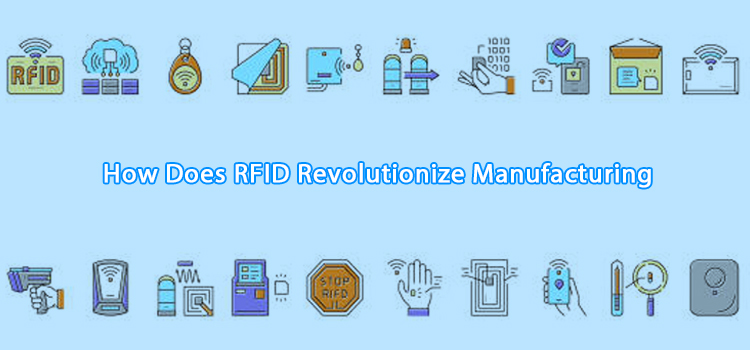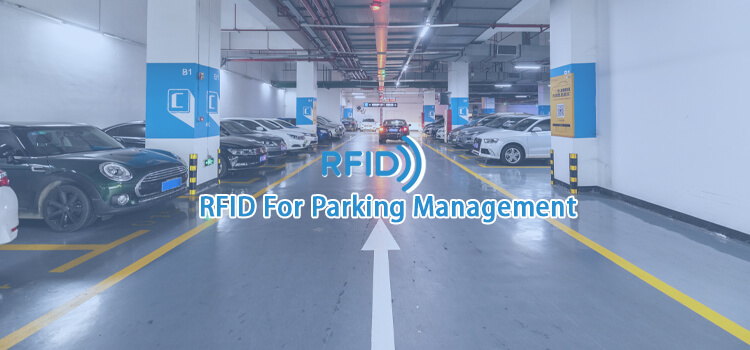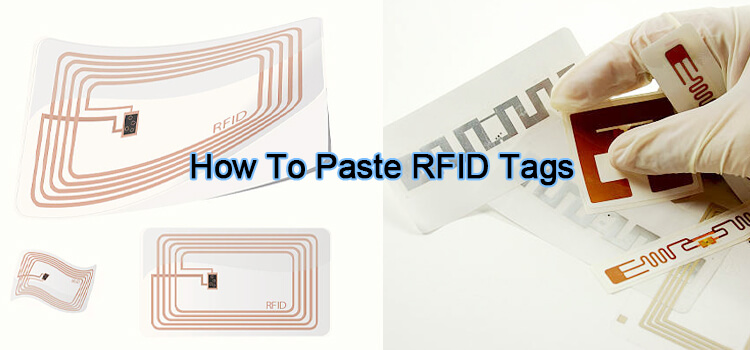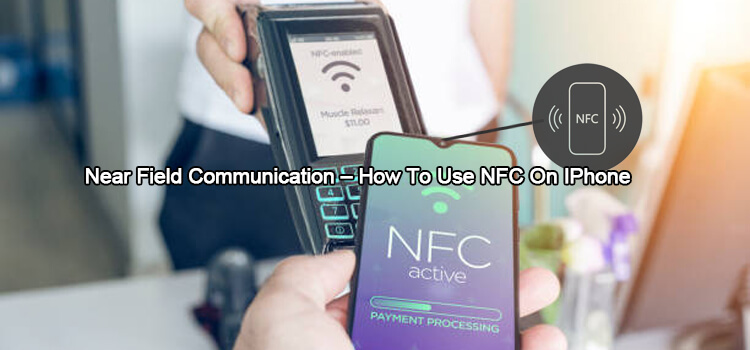RFID and barcodes are two of the most commonly used methods for tracking objects. They both have their advantages and disadvantages, making it difficult to decide which one is better for your business.
Here, we look at the pros and cons of RFID and barcodes, and we help you decide which one is better for your needs.
Definition of RFID
Radio Frequency Identification (RFID) uses radio waves to identify objects. It was discovered in the 1940s and commercialized in mid 1980s.
The technology works by embedding a chip with an antenna into an object. The chip emits a radio wave signal which is then picked by a reader. The reader converts the signal into data, which can then be used to track the object.
With RFID, you can track an object’s location, movement, and condition. You can also use RFID to identify objects, which can be useful for authentication purposes.
Definition of Barcode
A barcode is a machine-readable code that is used to identify objects. The code is made up of lines, dots, and other patterns that are scanned by a barcode scanner.
Barcodes are often used to track products in stores. The code is scanned by the barcode scanner, which transmits the data to a computer. This data can be used to identify the product, track inventory, and more.
History of Barcodes
The first barcode was created in the early 1940s by Norman Woodland and Bernard Silver. However, it wasn’t until the 1970s that barcodes began to be used commercially.
The duo discovered this technology while they were working on a project for the U.S. Department of Defense. They patented the technology in 1952, making it viable for tracking objects.
RFID vs. Barcode – An In-Depth Analysis
Now that we have a basic understanding of RFID and barcodes, let’s take a closer at how they compare:
Radio Frequency Identification (RFID)
As earlier indicated, RFID offers one of the most advanced methods of tracking objects. This technology can be used to track an object’s location, movement, and condition in real-time. RFID can also be used to identify objects, which can be useful for authentication purposes.
An RFID system comprises several components, including:
RFID Tags
An RFID tag is a critical element of an RFID tracking system. It comprises 3 main parts:
- A Microchip. This is the smallest part of the RFID tag. It contains the information that is used to identify the object. It has a memory that you can program with data, such as a product’s barcode or serial number.
- An Antennae. This component receives and transmits the RF signal from the RFID reader. It is responsible for all the communication between the tag and the reader. As such, a faulty antenna can affect the tag’s performance.
- Substrate. The coating protects the microchip and antenna from damage. It also enhances the tag’s performance by increasing its resistance to water and dirt.
The RFID tag is the primary component of an RFID system. It is a small, embeddable part that contains the information needed to identify an object. The tag emits a signal that can be picked up by a reader. The reader converts the signal into data, which can then be used to track the object.
Additionally, RFID tags can be classified based on the power source. They include:
- Active RFID Tags. These tags use a battery to power the RFID chip. As such, they will always be active and can broadcast signals continuously. This makes them ideal for use in inventory tracking and security applications. However, they are expensive to maintain and require periodic replacement.
- Passive RFID Tags. These tags do not have a battery. They rely on the power of the reader to transmit a signal. As such, they can only be used close to a reader. This limits their range and makes them unsuitable for use in inventory tracking or security applications. However, they are less expensive to maintain and do not require periodic replacement.
- Semi-Active RFID Tags. These tags use a battery to power the RFID chip. However, the battery will only be activated when it receives a signal from the reader. This makes them more efficient than active tags and less expensive than passive tags.
This classification of RFID tags is essential as it helps you choose the right tag for your application. For example, when tracking high-value items, it’s best to use an active RFID tag. This way, you will always know the object’s location and condition without a hassle.
RFID Readers
RFID readers are devices that decode the signals emitted by RFID tags. They vary in size, form factor, and performance. Some readers can only decode signals from passive tags, while others can decode signals from active and passive tags.
When selecting an RFID reader, you need to consider the following factors:
- Form Factor. RFID readers come in a variety of form factors, including tabletop, handheld, and embedded readers. You need to select a reader that is suitable for your application.
- Performance. RFID readers vary in terms of their performance. Some readers can decode signals from tags at a distance, while others can only decode signals from tags that are within proximity. You need to select a reader with the performance you need for your application.
- Connectivity. RFID readers can be connected to a computer or network using different interfaces, including USB, Ethernet, and Wi-Fi. You need to select a reader with the interface you need for your application.
RFID readers are essential components of an RFID system. They decode the signals emitted by RFID tags and convert them into data that can be used to track the object. The readers can be classified based on functionality as follows:
- Hand-Held Reader. These readers are small, lightweight, and easy to use. They are ideal for reading tags at close range. If you want to track many items at once, you can use this type of reader. You will just carry it to the room and scan all the items in minutes!
- Fixed Readers. This type of reader is installed in a fixed location, such as a warehouse or factory floor. It is designed to read tags from a distance. If you want to track items located in a specific area, you can use this type of reader.
- Portable Reader. This type of reader is similar to the hand-held reader, but it is larger and heavier. It is designed for use in rugged environments, such as construction sites or outdoor events.
- Desktop Reader. This type of reader is designed for use in office settings. It is small and lightweight and can be connected to a computer or network using different interfaces, including USB, Ethernet, and Wi-Fi.
- Reader Writers. These are readers that can also write data to RFID tags. They are used to update the information on an RFID tag. You can also use them to program a tag with unique identification information.
Applications of RFID Technology
- Asset Tracking. RFID tags are used to track the movement of assets, such as inventory, vehicles, and equipment. This helps businesses keep track of their assets and ensure that they are not misplaced or stolen.
- People Tracking. RFID tags are also used to track the movement of people, such as employees and customers. This helps businesses keep track of the people in their facility and ensure that they are not lost or wandering off.
- Transport Management. RFID tags are used to track the movement of cargo and freight. This helps businesses keep track of their shipments and ensure that they are delivered on time.
- Logistics Management. RFID tags are used to manage the flow of goods through the supply chain. This helps businesses to optimize their logistics operations and improve their customer service.
- Library Management. RFID tags are used to manage the circulation of books and other library materials. This helps libraries keep track of their materials and ensure that they are not lost or stolen.
- Retail Management. RFID tags are used to track the movement of merchandise in retail stores. This helps businesses to keep track of their inventory and prevent theft.
RFID technology is revolutionizing the way businesses track and manage their assets. By using RFID tags and readers, businesses can improve the efficiency of their operations and ensure that their assets are safe and secure.
Barcode Technology
Now that we’ve looked at RFID in detail, let’s take a look at barcode technology. So, what is barcode technology?
Barcodes are linear, machine-readable codes that are used to identify objects. They are printed on labels and stickers and can be scanned by barcode readers.
How Barcodes Work
Barcodes comprise a series of black and white bars. The barcode reader converts the bars into digital data, which is then used to identify the object.
There are different types of barcodes, each of which is designed for a specific application, including:
- 1D Barcodes. 1D barcodes are the simplest type of barcode and are composed of a series of bars and spaces. They are used for identifying products, such as groceries and pharmaceuticals.
- 2D Barcodes. 2D barcodes are more complex than 1D barcodes and can contain more data. They are used for identifying products and tracking movements, such as inventory and shipping containers.
- QR Codes. QR codes are a type of 2D barcode that can be scanned using smartphones. They are used for identifying products, websites, and other types of information.
Unlike RFID, barcode requires a direct line of sight between the barcode and the scanner. This means that the reader cannot read the barcode if it is covered or hidden behind an object.
This is one of the most pronounced disadvantages of barcodes over RFID technology. You can’t just wave a barcode scanner over an item to get its identification. Instead, you have to make sure the scanner and tag are pointed in the same direction.
Additionally, barcodes can only store a limited amount of data, whereas RFID tags can store much more information. On the other hand, barcodes are less expensive than RFID tags, and they are more widely used.
Applications of Barcodes
Barcodes are used in a variety of applications, including:
- Retail. Barcodes are used to track the movement of merchandise in retail stores. This helps businesses to keep track of their inventory and prevent theft.
- Pharmaceuticals. Barcodes are used to identify and track pharmaceutical products. This helps pharmacies keep track of their inventory and ensure that they are not selling counterfeit drugs.
- Libraries. Barcodes are used to track the circulation of library books and other materials. This tech helps librarians keep track of their materials and ensure that they are not lost or stolen.
- Railways. Barcodes are used to identify and track railway freight containers. This technique helps railway operators keep track of their inventory and ensure that they are not losing freight.
Barcodes vs. RFID: Which is better? Barcodes or RFID?
Well, that depends on the application. Barcodes are less expensive than RFID tags, and they are more widely used. However, RFID tags can store more data than barcodes, and they do not require a direct line of sight between the tag and the scanner. Additionally, RFID tags are more difficult to counterfeit than barcodes.
Overall, RFID is better than barcodes for most applications. However, there are some cases where barcodes are preferable. For example, barcodes are better for retail stores and libraries, while RFID is better for tracking railway freight containers.
How to Choose Between RFID and Barcodes
When choosing between RFID and barcodes, there are a few factors to consider:
- Cost. RFID tags are more expensive than barcodes.
- Data capacity. RFID tags can store more data than barcodes.
- Read range. RFID tags have a longer read range than barcodes.
- Ease of use. Barcodes are more user-friendly than RFID tags.
- Security. RFID tags are more difficult to hack than barcodes.
- Applications. RFID is better for some applications, such as tracking railway freight containers, while barcodes are better for others, such as retail stores and libraries.
You should choose RFID if you need a tag that can store a lot of data, has a long read range, or is more difficult to hack. You should choose barcodes if you need a less expensive tag.

